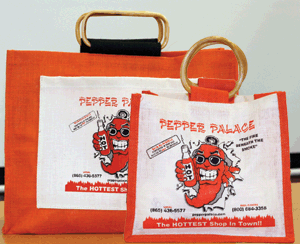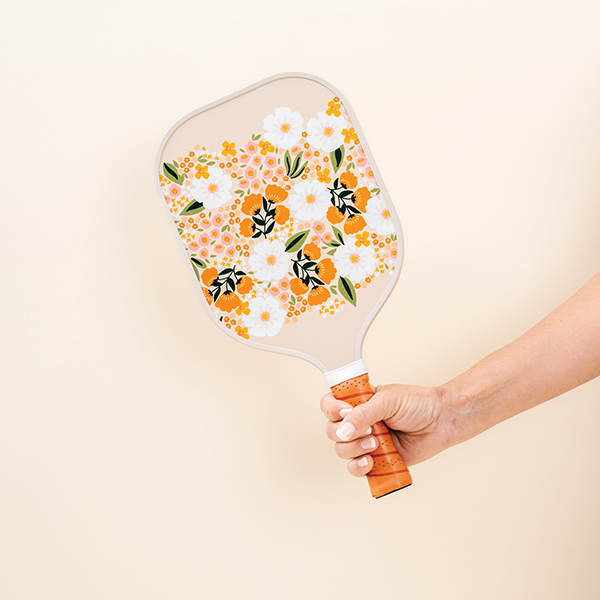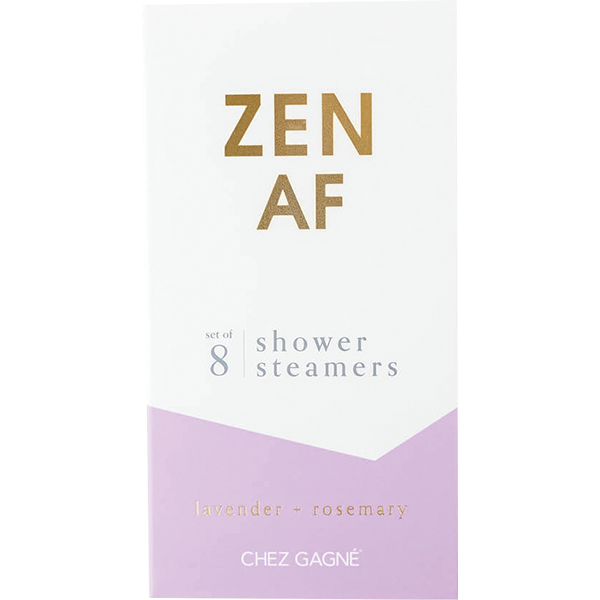Packaging: Too Hot to Handle
Article Resources
Gift Box Corporation of America
800.443.8269
800GiftBox.com
Parker LePla
206.685.5280
ParkerLePla.com
Pepper Palace
800.684.3358
PepperPalace.com
Craig Migawa knew the packaging for his Pepper Palace store in Gatlinburg, TN, wasn’t working to his best advantage, but he wasn’t sure what to do about it. All the goods from his 3,400-square-foot specialty hot sauce store were going out the door in plain bags that he bought in bulk at a warehouse store. They did have “Thank You” stamped on them in, but somehow that didn’t fire anyone up.
Besides, the bags weren’t durable, they didn’t survive rain and they deteriorated quickly. Then there were the four-bottle salsa packages sold at Pepper Palace. “They were shrink-wrapped together and customers couldn’t touch them, turn them around to read the labels or exchange them for other flavors,” Migawa says. They too weren’t working.
“Gift shop retailers should know that everything they do contributes to the customer experience,” says Briana Marrah, vice president of Parker LePla, an integrated branding and communications business in Seattle. “You create an association with your shop through every customer interaction. Whether it’s your bags, signage or customer service, those interactions say volumes about your store, and customers are quick to recognize inconsistencies.”
Migawa, who started his store in 1989, recognized his packaging was a problem, so he started looking for a solution by shopping for jute bags to hold his four-packs of bottled salsas. In May 2002, he requested a catalog from the Gift Box Corporation of America. That company’s territory manager, Jim White, followed up with a call and an appointment. White showed Migawa the company’s choices in jute bags, and asked if he might be interested in changing shopping bags.
“I explained what we could do with artwork on the bags,” White says. “We teamed up with a local artist and created Pepper Palace’s new jute bags and his attention-getting shopping bags.”
The four-pack salsa bottles are now packaged in jute bags with wooden handles. The jute bags are mini-versions of Pepper Palace’s plastic shopping bags. They’re durable and easy to handle. As an added bonus, they contribute to Pepper Palace’s branding.
The new plastic bag has full graphics, including a big, wild-looking red pepper holding a jar of hot sauce. The graphic elements include flames encasing the phrase, “The Hottest Shop In Town,” which runs across the bottom of the bag. The phrase is a clever play on words for Pepper Palace, but according to White, the hottest store in town is really what every store would like to become. “Migawa has achieved both meanings,” says White. Not only are his sauces scorching hot, so are his sales.
Branding through packaging
 “Brand is the sum total of your entire customer experience—a combination of what you do, how your company looks and what you say about it,” Marrah says. “Packaging that doesn’t represent your brand can compromise everything else you do, because it sends an inconsistent message to your customer.”
“Brand is the sum total of your entire customer experience—a combination of what you do, how your company looks and what you say about it,” Marrah says. “Packaging that doesn’t represent your brand can compromise everything else you do, because it sends an inconsistent message to your customer.”
On the other hand, according to Marrah, packaging that reinforces your brand, like Pepper Palace’s bags, will leave a lasting reminder of the customer’s experience. “The whole look and feel of the packaging should be consistent with your brand—the quality of the materials, the graphics and the visual message,” Marrah says.
Pepper Palace’s shopping bags have become so popular that non-customers stop in and ask if they can buy one. Migawa recognizes that they are a great way to advertise, so he gladly sells the bags for $1.50 each. “This is a service we provide in a tourist town, even though they don’t buy anything in the store,” Migawa says. Gatlinburg is a town where vacationers can golf, ski, go whitewater rafting or visit the Great Smoky Mountains National Park. According to the National Park Service, last year alone, 3.4 million people visited Gatlinburg. Migawa says that tourists carry Pepper Palace bags all over town, take them home and reuse them.
“I’ve put 80 percent of my advertising budget into our bags,” Migawa says. “It’s the most bang for my buck.”
According to Marrah, strong brands command a 20 to 30 percent price premium—meaning that customers are often willing to pay that much more for a strong brand. “A good example is Morton’s Salt. Table salt is table salt, but Morton’s is often priced as much as 30 percent higher than the generic brands, because consumers associate Morton’s brand as being familiar and reliable. And everyone loves the little girl with the umbrella,” she says. That doesn’t mean that good packaging alone will enable you to charge 30 percent more than your competitors, but it is one of the three main elements that will. The other two, Marrah says, include what you say about your company and how you run your business.
Before and after
Pepper Palace has quadrupled its business since it switched from the old, white bags. Migawa says it cost quite a bit to change to the new bags—they are about triple the cost of the original bags—but the price has been well worth it.
According to Marrah, one of the main expenses of changing packaging is paying the graphic designer. “Invest a little more in the graphic designer than you’re comfortable with,” she suggests. “A good graphic designer can take you a long ways, and if given strict guidelines will design something to suit your budget.” Marrah says she’s had good luck hiring graphic designers who have just graduated or are still in school. They will often work at a lower cost to get the experience, she says.
“But what you save in design costs could cost you in printing and production,” Marrah cautions. “You will want to be sure the designer you’re working with has experience in the type of packaging you need. Plus, you’ll want to interview their references before moving forward.”
“When shopping for new packaging, think about the message you want to send to your customers. A bargain retailer keeps prices low, and the customer expects that everything they use will be a bargain. If you want to send a message that your customers will have an unique experience, then your bags should contribute to that message,” Marrah says. “For a tourist, half the fun is the bag they can reuse as a memento of their experience. Your bag is not just a conduit for your products; it creates an association with your store.”
“When I saw how well the new packaging worked, I realized that continually updating and trying new things is well worth my time,” says Migawa. “Before, I just didn’t think too much about it.”
Will It Work for You?
Briana Marrah, vice president of Parker LePla, an integrated branding and communications business in Seattle, says strong brand recognition creates advertising for your store. “Customers see the consistency and the meaning, and that is the crowning jewel on the customer experience,” Marrah says. “You do have to consider the downsides of changing to new packaging and weigh your options.”
For Pepper Palace, one of the “downsides” was a lack of storage space. “In order to get a good deal, I had to buy several thousand pieces [of bags], and I [didn’t] know where to put all that inventory,” Pepper Palace owner Craig Migawa says. “Lead times are quite long, so I have to order new packaging way before I run out.”
“Sometimes the cost of changing your packaging can be impractical,” says Marrah. “Don’t spend so much that you’re taking away from good employee training, signage or the right combination of products.”
Marrah also suggests that you pay attention to environmental concerns. Ask yourself: How much excess packaging do I use? Is there waste? Am I using recycled products? Some customers will notice.
“Go to other gift shops and see what they are doing and see if you can relate it to your own business. [See] what parts of their packaging might be right for your business,” Migawa advises.
Marrah suggests that gift shop owners pay a lot of attention to what they want the customer experience to be. “Look at various touch points and work packaging into the larger experience,” she says. In other words, spice up your bags and boxes, and your sales may be too hot to handle—just like those at Pepper Palace.






















